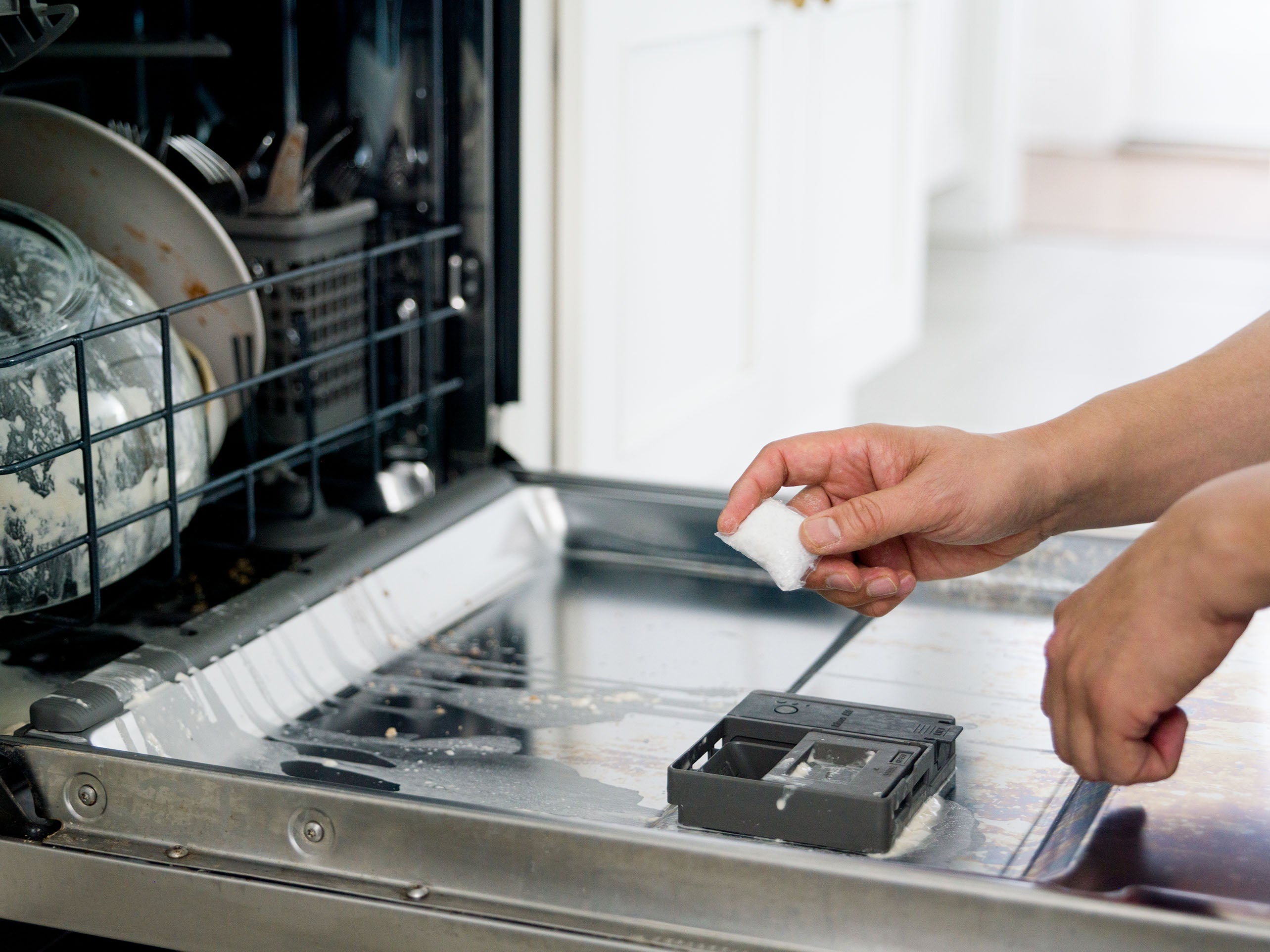
How to Use Dishwasher Pods Correctly for Best Results
Dishwasher pods are a heaven sent for dishwasher owners. It’s convenient and it packs a punch in the way it cleans versus a liquid or a powder detergent.
There is debate on the internet over how to get the best cleaning results, including how to use the pods and where to put it. Some say it should be placed in the detergent compartment and others say it should be tossed inside the unit’s body along with the dishes.
In a poll that Consumer Reports conducted, they found that dishwasher pods work better than liquid and powder detergents. Here are other reasons why consumers prefer pods better than liquid and powder detergents:
They are pre-measured.
One pod is equal to one normal cycle. It takes away the guessing game on measuring the correct amount of detergent every single time.
They are less likely to cause filming on dishes.
Since pods are pre-measured, they are less likely to cause filming. Cloudy dishes mean you may have used more detergent than necessary.
They clean better.
Dishwasher pods are enclosed in polyvinyl alcohol (PVA) and divided into two to three sections. You have an enzymatic-powered detergent and a rinsing agent in one pack. This combination is great at working on the food particles and making sure there are no watermarks afterward.
How to Use Dishwasher Pods

Before trying on any myth-debunking trends from TikTok, the first thing you need to do is refer to your dishwasher’s user manual.
That manual will tell you where to place your dishwasher pods and if a dishwasher pod is recommended for the particular unit.
Here’s a general step-by-step guide on how to best use dishwasher pods on your machine:
What you’ll need: your favorite enzymatic dishwasher pod, a rinse aid (optional), a clean cloth
-
Load the dishes correctly in the dishwasher.
A properly loaded dishwasher will help give you the best results. Apart from getting all your dishes cleaned properly, you will also save water, time, and energy.
- Manually remove big food particles off your dishes first. Do not manually pre-rinse or else the enzymatic detergent will not do its job well.
- Load the plates, utensils, glasses in their designated compartments without overcrowding. Whirlpool recommends placing the plates on the lower rack and the glasses and bowls on the upper rack.
- Load them at an angle and downward to make sure the water jets can do their jobs correctly.
Additional tips:
- Avoid loading sharp objects like knives or the part of the blender with the blades because they have a tendency to become dull.
- Anything wooden, like spoons and cutting boards, should be hand washed instead to avoid cracking.
-
Place pods in the compartment stated in your manual.
More often than not, you place the dishwasher pod in the detergent compartment for a regular wash cycle. And that’s the correct way, according to Whirlpool and Bosch, except when running a quick cycle.
These manufacturers recommend throwing in the pods inside the dishwasher — on the bottom of the unit or in the utensils compartment for quick cycles. The gel pod casing of a dishwasher pod may not fully disintegrate during a quick wash, that’s why.
Pro tip: Remember to read your owner’s manual for correct instructions on where to place pods. It may also tell you if the unit works best on a specific form of detergent, like liquid or powder form.
-
Add a rinse aid (optional)
A rinse aid is optional. But sometimes, it’s the answer to avoiding detergent film or water spots that may form on the dishes.
As a surfactant, it also helps dry the dishes faster. This is helpful especially if you have hard water at home.
-
Choose your settings and run the dishwasher.
You can choose from preset dishwasher cycles, like normal, quick wash, or heavy cycle. Or you can choose your own settings.
Push start and you can leave it while it’s running.
-
Open the dishwasher for quicker drying.
Open the dishwasher for a few minutes to allow the steam to come out. This prevents a damp environment inside and it will help dry the dishes faster.
Afterwards, you can use a clean cloth to wipe them in case the dishes are still wet before organizing them in your cupboard.
Frequently Asked Questions (FAQs)

If you’re still unsure about how to use dishwasher pods, we’ve answered some frequently asked questions here:
-
What’s the Best Dishwasher Pod to Use?
Here’s what you need to look for when choosing the best dishwasher pod:
Enzymatic cleaner
A good dishwasher pod is powered by enzymes. Enzymes break down grease and food particles in a way that works best for your machine without suds or foam.
No SLES, parabens, and other harmful chemicals
Go for dishwasher pods that are good for you and for the environment. Choose one that does not include harmful ingredients like phosphates, SLES, parabens, bleach, perfumes, phthalates, and other harmful chemicals.
With water softeners to combat hard water stains
Some dishwasher pods already contain water softeners so you don’t have to buy a separate rinse aid. This part of the pod makes sure there are no water spots or cloudy streaks on your dishes.
Biodegradable film
Each pod is made of polyvinyl alcohol (PVOH) covering that dissolves when it comes in contact with water. PVOH is under the US Environmental Protection Agency’s (EPA) Safer Chemical Ingredients list. Find one that is designed to be biodegradable—these do not persist in the environment and do not bioaccumulate.
-
What Are the Risks of Just Tossing the Pod in the Machine?
Most dishwashers today have a compartment for pods. Where you put the pods depends on what the machine’s manufacturer recommends.
With the nature of pods being water soluble, it breaks down at contact with water. If you place it inside the machine on the bottom surface, the pod breaks prematurely during the pre-rinse cycle.
-
How Many Pods Should Be Used per Wash?
Dishwasher pods are single dose—one pod is powerful enough to run a complete normal cycle.
-
Can I Still Use Old or Expired Dishwasher Pods?
Yes, it’s possible to use old or expired dishwasher pods but they may no longer be as reliable as fresh ones. They are usually in good condition with a shelf life of 12-15 months.
-
Which Is Better for Your Dishwasher: Pods or Dish Soap?
Pods are specifically designed for dishwashers. They rely on the power of enzymes to break down grease and food particles. On the other hand, dish soap relies on sudsing and foaming to cut through food and oil. It is not recommended for use in the dishwasher.
What You Need to Know About Dishwasher Pods

- Dishwasher pods are a convenient and effective way to clean dishes. They are pre-measured and are less likely to cause filming on dishes than liquid or powder detergents.
- To use dishwasher pods, load the dishes correctly in the dishwasher, place the pod in the compartment stated in your manual, add a rinse aid (optional), choose your settings, and run the dishwasher.
- The best dishwasher pods are those that are powered by enzymes, do not contain harmful chemicals, have water softeners, and are made with a biodegradable film.
- Always refer to your dishwasher’s user manual on how best to operate the machine, what type of detergent is best for your unit, and how to use a dishwasher pod.


























